Jackass Genomics – Did Donkeys Arise from an Inverted Chromosome?
In the world of genome sequencing, donkeys haven’t received nearly as much attention as horses. But now a report on a new-and-improved genome sequence of Willy, a donkey (Equus asinus) jack born at the Copenhagen Zoo in 1997, appears in the new issue of Science Advances, from Gabriel Renaud, of the Centre for GeoGenetics, Natural History Museum of Denmark. (A female is a jenny or jennet.) The new view provides clues to how donkeys may have branched from horses along the tree of evolution.
Equid Evolution
The equid family has flourished over the last 55 million years, with a dozen genera known only from their fossils. Today just one genus remains, Equus, which includes the horse, three zebra species, and three ass species. The six zebra and ass genome sequences are published here, and I recently wrote about the extinct quagga.
The most recent common ancestor of the modern equines lived from 4.0 to 4.5 million years ago. The lineage leading to asses (including the donkey) and zebras split off from the shared ancestor about 1.8 to 2 million years ago, according to several older reports. The new donkey genome sequence refines the estimate of the split between asses and zebras to 200,000 years earlier.
The more recent asses, from Asia and Africa, diverged 1.75 to about 1.5 million years ago. (Evolution proceeds as a series of branches from shared ancestors; the popular cartoon of a chimp preceding a human is not accurate.) Finally, about 700,000 years ago, the forerunners of donkeys parted ways from the African wild ass, from Somalia and/or Nubia (an area along the Nile between Aswan in southern Egypt and Khartoum in central Sudan). Today’s Somali wild ass population is severely endangered.
Donkeys were domesticated about 5000 years ago as the climate dried out. They’ve been beasts of burden ever since.
Hybrid Possibilities
Horses and their relatives, past and present, are genetically peculiar in that their chromosomes are rearranged, with respect to each other. That should prevent them from producing viable hybrids – yet they do.
Donkeys have 62 chromosomes and horses have 64. A mule comes from the mating of a male donkey and a female horse, and has 63 chromosomes. Mules are known for their intelligence, calm, stamina, and persistence. Their horse-like bodies perched on donkey-like limbs make them ideal for hauling tourists around the Grand Canyon and schlepping supplies in combat situations. The ears are large like those of the horse mom, and mules make a sound that begins as a whinny and becomes a bray.
The complementary couple, a female donkey and a male horse, produces a hinny, smaller than a mule. Hinnies are the flip side of the mule, with a donkey’s physique atop horsey limbs, and short donkey ears. They’re rarer than mules, but also have 63 chromosomes. It’s easy to mix them up.
Male mules and hinnies like to have sex a lot, so castration is advised. Their odd chromosomes make them sterile. And for both mules and hinnies, a male is called a John or a Jack, and a female, a Molly. (See The Donkey Sanctuary to learn more.)
Donkeys bred with zebras produce the partially striped zonkey.
Famous Donkeys
Everyone knows Eeyore, the perpetually despondent stuffed donkey in Winnie-the-Pooh. Another famous donkey is Jimmy, a noted veteran of the bloody battle of the Somme, in World War 1.
When a young Jimmy staggered onto the battlefield, German and Scottish troops stopped. “No doubt the sight of this wee waif gladdened the hearts of many of these war weary soldiers,” wrote Cindy Crank in a wonderful post about the celebrated equine.
Jimmy went on to a career carrying the wounded and supplies, drinking from the same tins of milk as the Scottish soldiers. He sustained wounds several times and was promoted to the rank of corporal for his efforts.
After the war, rather than becoming food for starving soldiers, Jimmy was adopted by a proper English lady, and he lived out his days in Peterborough, “in a small paddock in the town centre and people would visit him and drop coins into a small bucket around his neck for the Royal Society for Prevention of Cruelty to Animals,” Crank wrote. The donkey died in 1943, and his tombstone reads “JIMMY, born on the Somme 1916.”
The Horse and Donkey Genome Are More Alike Than Different
With a blood sample from Willy, Dr. Renaud and his colleagues improved upon previous donkey genome sequences by obtaining larger hunks of chromosomes, leaving fewer gaps. Sequencing requires fracturing many copies of a genome, then overlapping the pieces, and Willy’s entailed 61-fold coverage. The genome has 18,984 protein-coding genes – just a thousand or so fewer genes than our own genomes – comprising about 1.3 percent of the total sequence, also a little like us.
Comparing Willy’s genome to a horse genome (in nice Venn diagrams in the paper) revealed their close evolutionary relationship. Only about 15% of horse genes aren’t also in the donkey genome, and only about 10% of a donkey’s genes don’t have counterparts in the horse. Most of the genes that they share provide basic “housekeeping” functions like dismantling proteins, repairing DNA, enabling embryonic development, and controlling cell division. So that’s why a copy of each genome can smush together to yield mules and hinnies.
Subtext in Genomes
A second form of information encoded in genomes, in addition to the A, C, T, G sequence, is the pattern of whether the two variants of individual genes are different (heterozygous) or the same (homozygous). Many contiguous homozygous genes form a “run of homozygosity” (ROH).
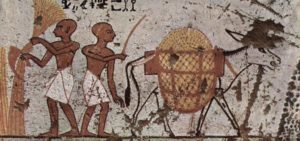
An ROH indicates a chromosome chunk, perhaps as long as millions of DNA bases, that’s the same from each of an individual’s parents, who in turn inherited it from a shared ancestor, like a grandparent that cousins share. The longer the ROH, the more recent the shared ancestor, because it takes time for mutations to accrue that would break the sameness of the sequence.
Scrutinizing ROHs can reveal recent inbreeding and domestication, help to reconstruct possible branching patterns of evolution, and, more practically, help ancestry companies assign the DNA in spit samples to geographic areas where people’s ancestors might have come from. The new study compared ROHs for the three zebra and three ass species, confirming that Willy’s most recent ancestors were Somali wild asses.
From DNA Sequences to Chromosomal Contortions
The researchers used Chicago HiRise assembly technology to up the quality of Willy’s genome sequence. “This new assembly allowed us to identify fine-scale chromosomal rearrangements between the horse and the donkey that likely played an active role in their divergence and, ultimately, speciation,” they write.
The bigger pieces enabled them to zero in on DNA sequences where chromosomes contort, such as inversions (where a sequence flips) or translocations (where different chromosome types exchange parts). These events could have fueled the reproductive isolation of small populations that can expand into speciation.
Inversions may explain how donkeys diverged from horses on the evolutionary tree. A half dozen genes in the vicinity of the breakpoints of a large inversion on horse chromosome 28, the places where the DNA flips, impact male fertility.
One gene in particular emerged as a possible donkey-driver: KITLG. A large inversion severs the gene from its control DNA sequence. The encoded protein normally functions in the testes. Disabling it would strangle spermatogenesis, preventing sperm from completing meiosis (the segregation of a single, complete set of chromosomes into a forming gamete).
Might a single chromosomal glitch have set donkeys onto their own evolutionary pathway?
It might have happened because of the effects of an inversion on meiosis. If one chromosome is inverted and its partner not, the two contort in order for their genes to align. As a result, half of the resulting sperm or eggs have too many of some genes and too few of others; a quarter are normal; and a quarter have the inverted chromosome. But if eventually sperm with one inverted chromosome 28 fertilized eggs with the same inversion, animals would have been conceived in which both copies of the chromosome are inverted – and they’d be fertile with each other, but not with horses. Once a subpopulation with the inversion became established, further genetic changes would separate them further from the ancestral horse.
I discussed this idea of speciation driven by chromosome change for translocations, in “Can A Quirky Chromosome Create a Second Human Species?” And there’s evidence that the domesticated horse arose from a translocation in the wild and more ancient Przewalski’s horse genome.
My genetic just-so story for donkey origins goes beyond the new report, so I’m open to other interpretations.

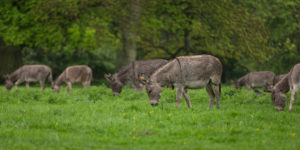
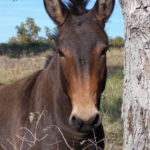
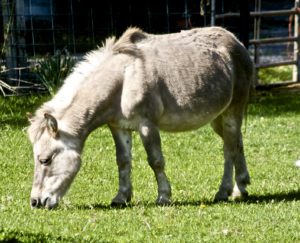
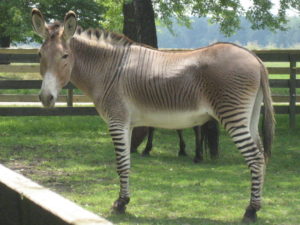
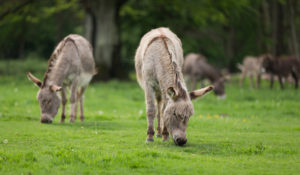
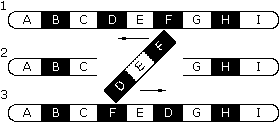
[…] Source: Jackass Genomics – Did Donkeys Arise from an Inverted Chromosome? […]
Interesting article, but odd that such a knowledgeable person would make the mistake of horses= big ears, donkeys= small ears. Head scratcher, that one…
Wonderful read for the horse people among us. Thank you!
Thanks! I’ve been interested in horse evolution since early childhood. See “The Evolution of the Horse” coloring book! https://www.amazon.com/Evolution-Horse-Dover-Nature-Coloring/dp/0486467953